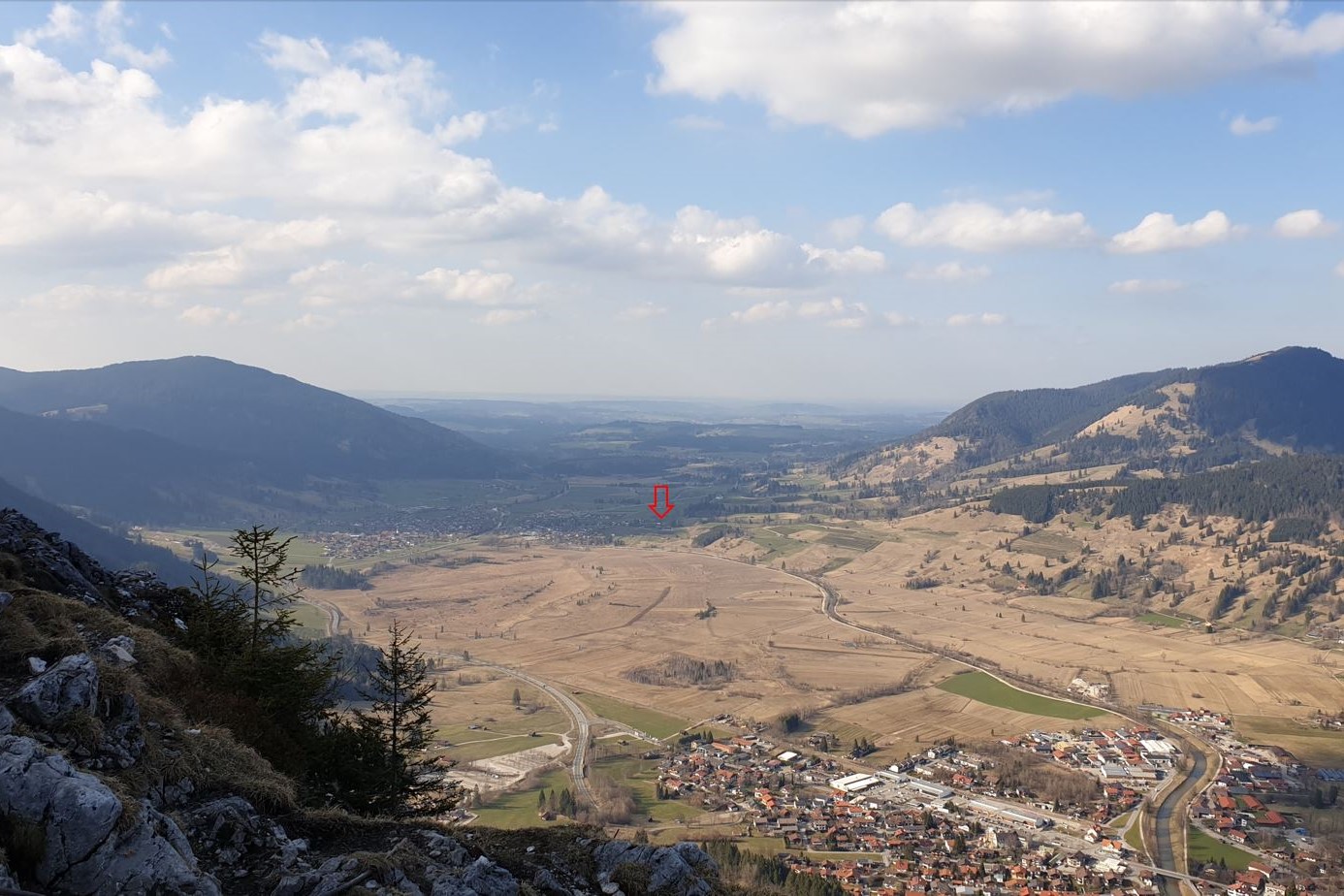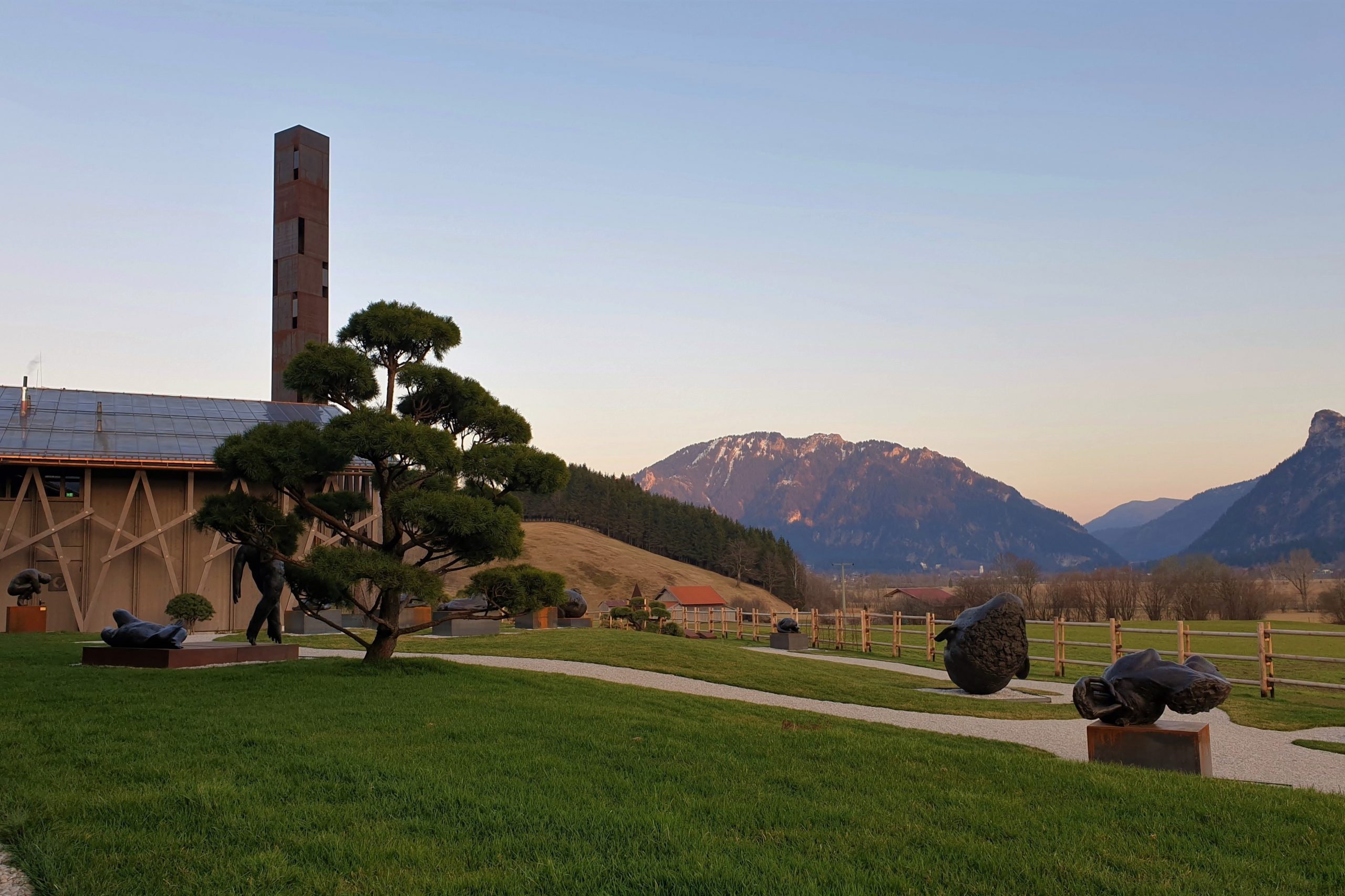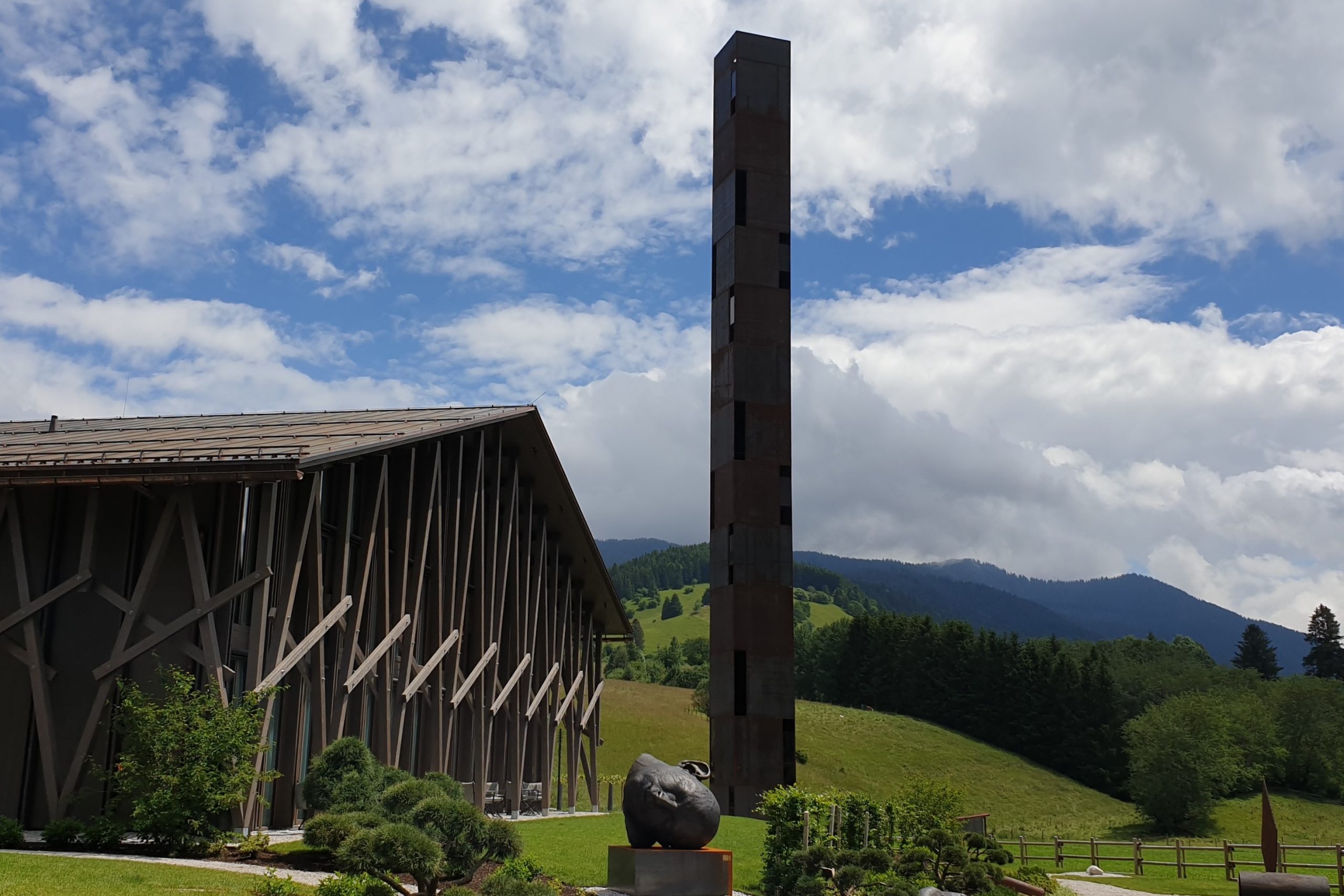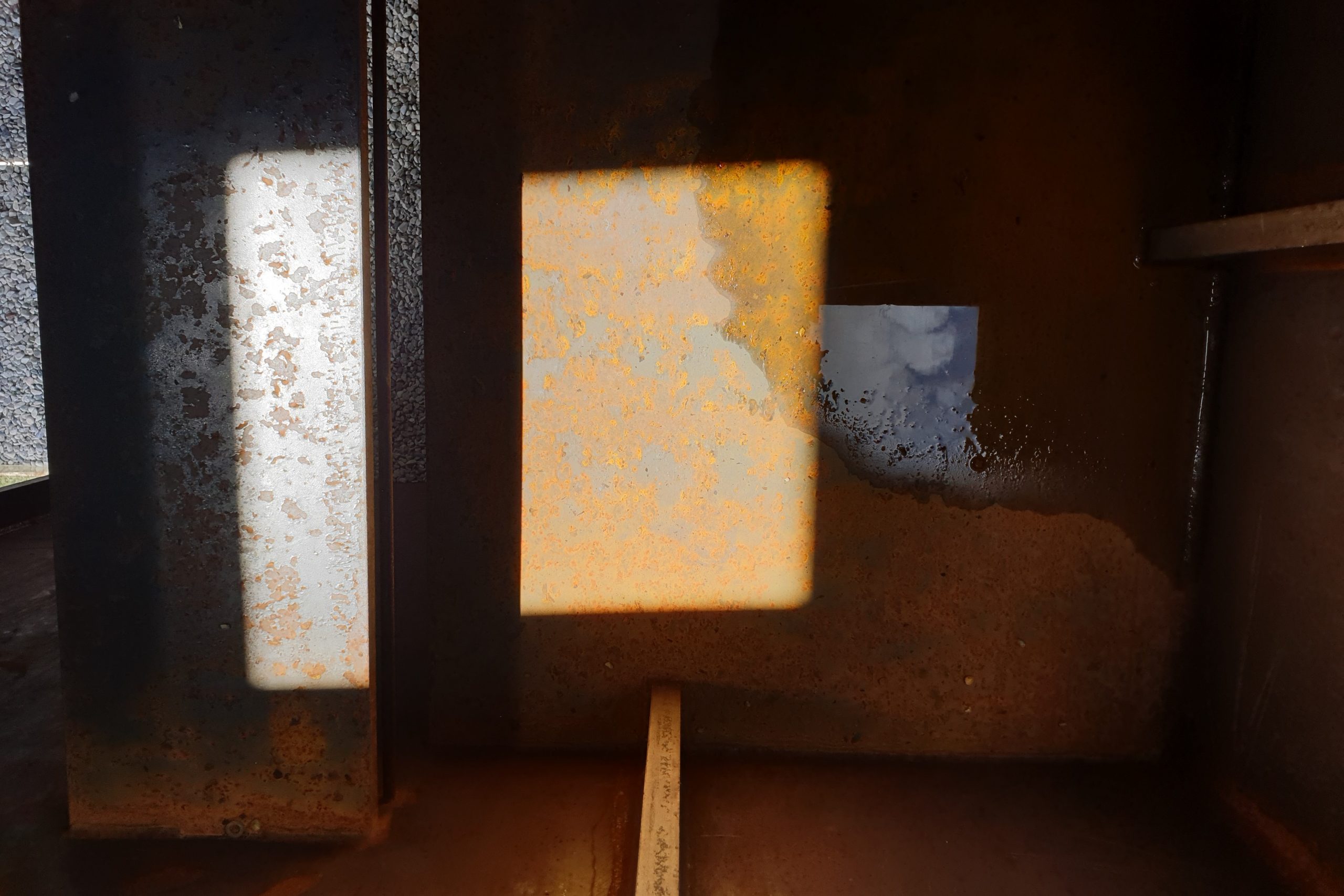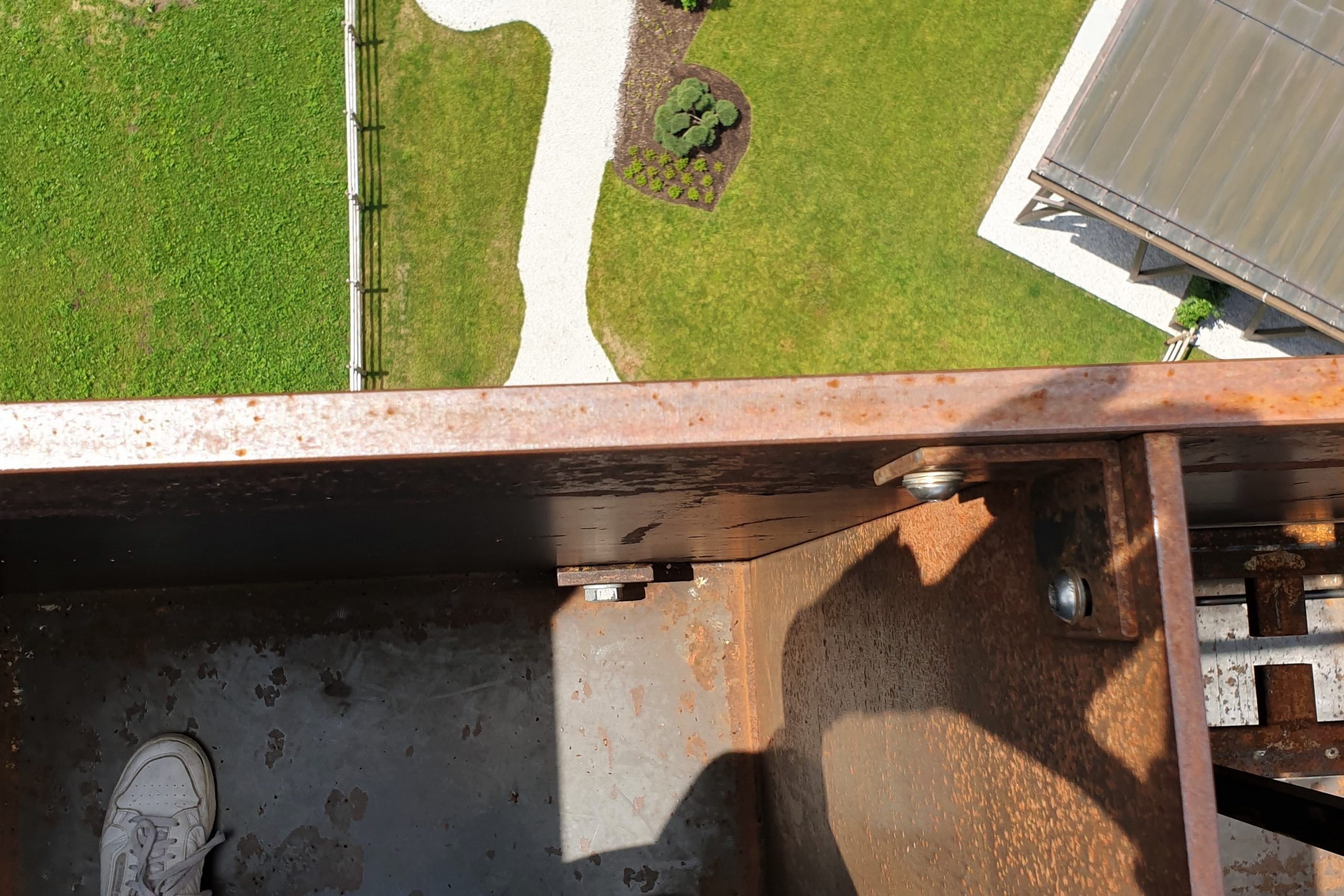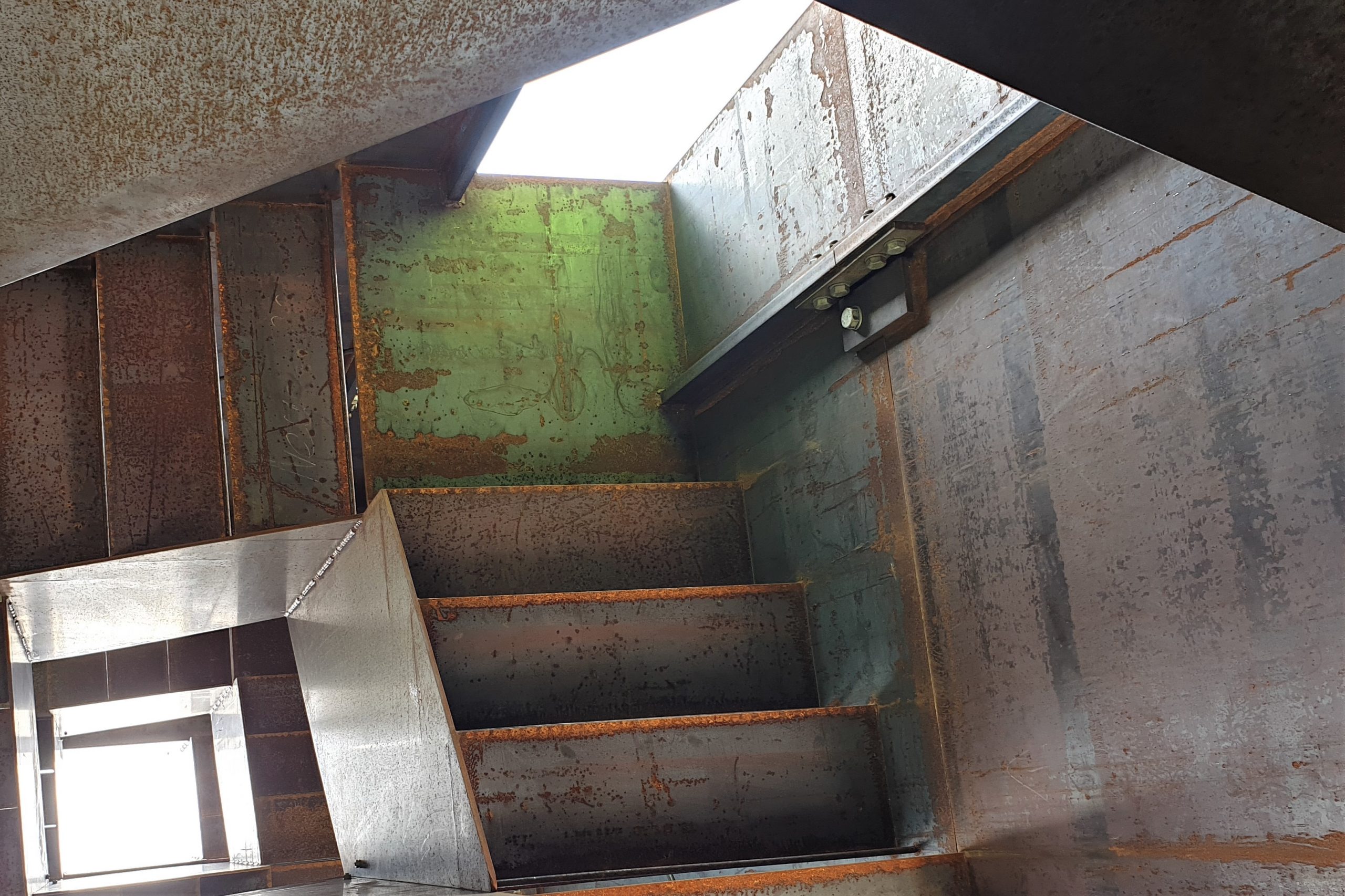SIGHTING III
SIGHTING III is a walkable steel-sculpture by Hildegard Rasthofer and Christian Neumaier. From October 2019 to August 2020, it was presented on its third location: the sculpture garden of the mSE Kunsthalle. After its forth installation, SIGHTING has returned to Unterammergau in Mai 2022. After a permanent permission for the artwork in Unterammergau was refused for a second time, the sculpture was sold in 2023.
The artwork
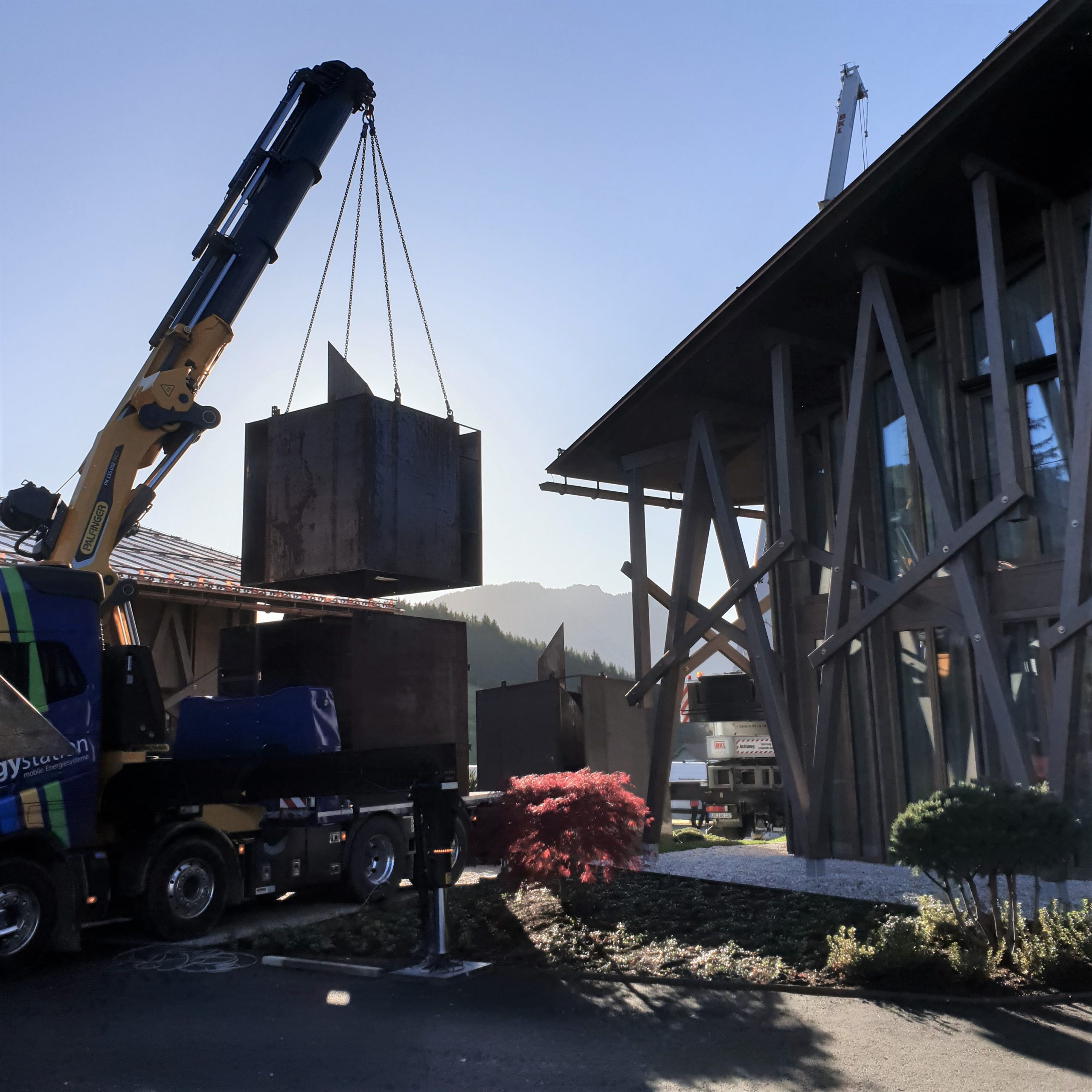
70 mobile tonnes of steal
SIGHTING consists of steal cubes with a lenght of 2.4 m each and a steal ring on the top. On its location in Flossenbürg, the sculpture has a hight of 32.4 m. The cubes are put on top of each other via crane and then screwed together. The sculpture can be assembled and disassembled within a few hours. It is conceived as a mobile installation. In any event, the sculpture is also a remarkable technical achievement.

Spatial and sound sculpture
Moving inside the artwork, the visitor experiences the surrounding space in a different and thrilling way: vertically he or she may explore the sculpture's volume and the space and landscape around it. The wind, the sounds of the environment, the visitor's own steps and breath, together, create a unique richness of sound.
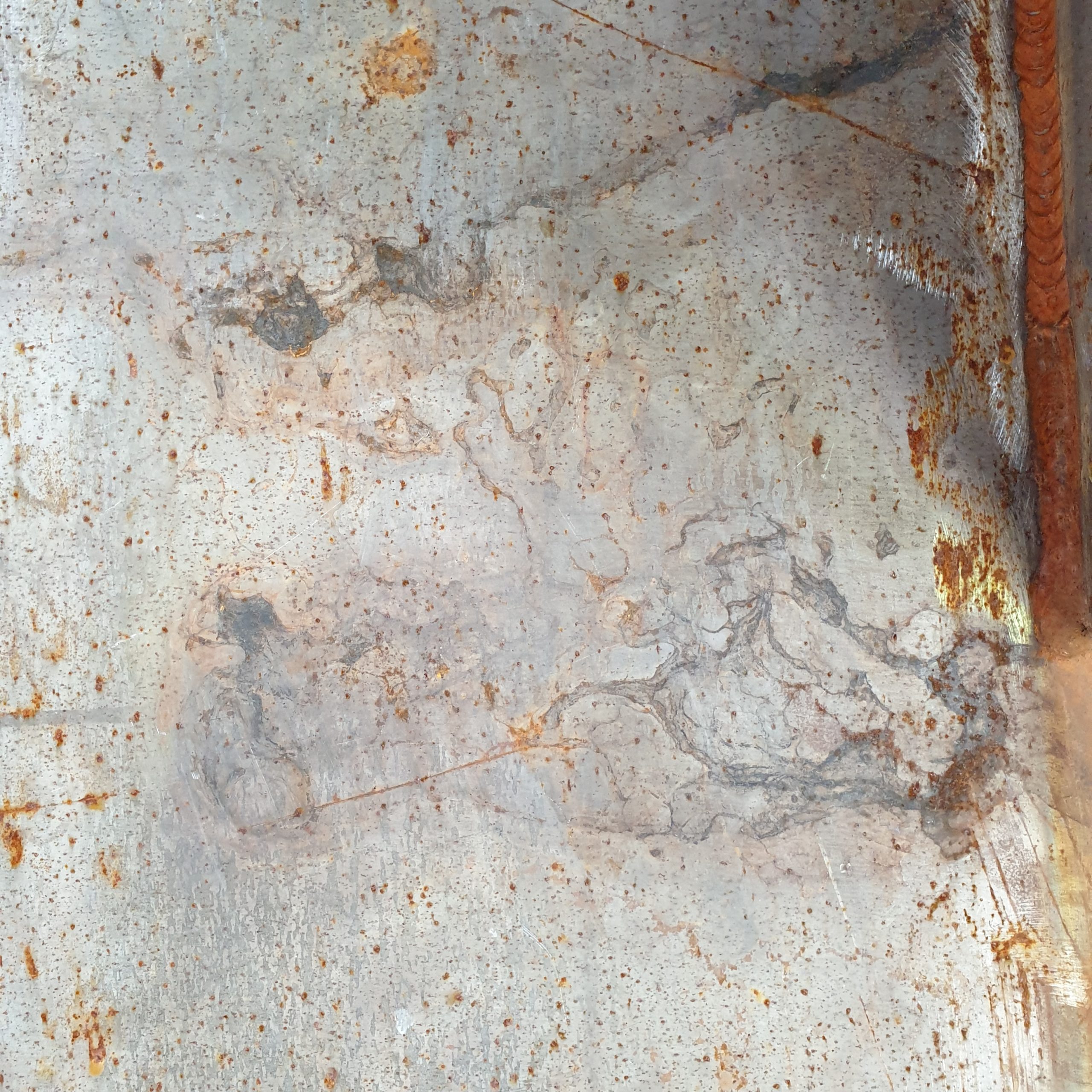
Materiality
The construction steel has a changeable, multifaceted surface: blank, injured, patinated, different stages of corrosion. Light, wether, and the point of view of the spectator alter the colors of the material, ever changing between silver, grey, blue, green, red, orange, brown, and black.
The Artists
Hildegard Rasthofer, architect and artist, was born in 1968 in Wartenberg. She studied architecture at the TU Munich. Christian Neumaier, born 1965 in Haag, is a metal sulptor and maste blacksmith. As an artist, he coöperates with Hildegard Rasthofer in the interdisciplinary field of experimental architecture and sculptural creation.
>>Every visitor leaves by means of movement a specific pattern of sound in the sculpture -- a trace of sound.<<
(Hildegard Rasthofer, Christian Neumaier)
The location
>>The sculpture moves to places where an exciting interaction with the environment happens.<<
(Hildegard Rasthofer, Christian Neumaier)
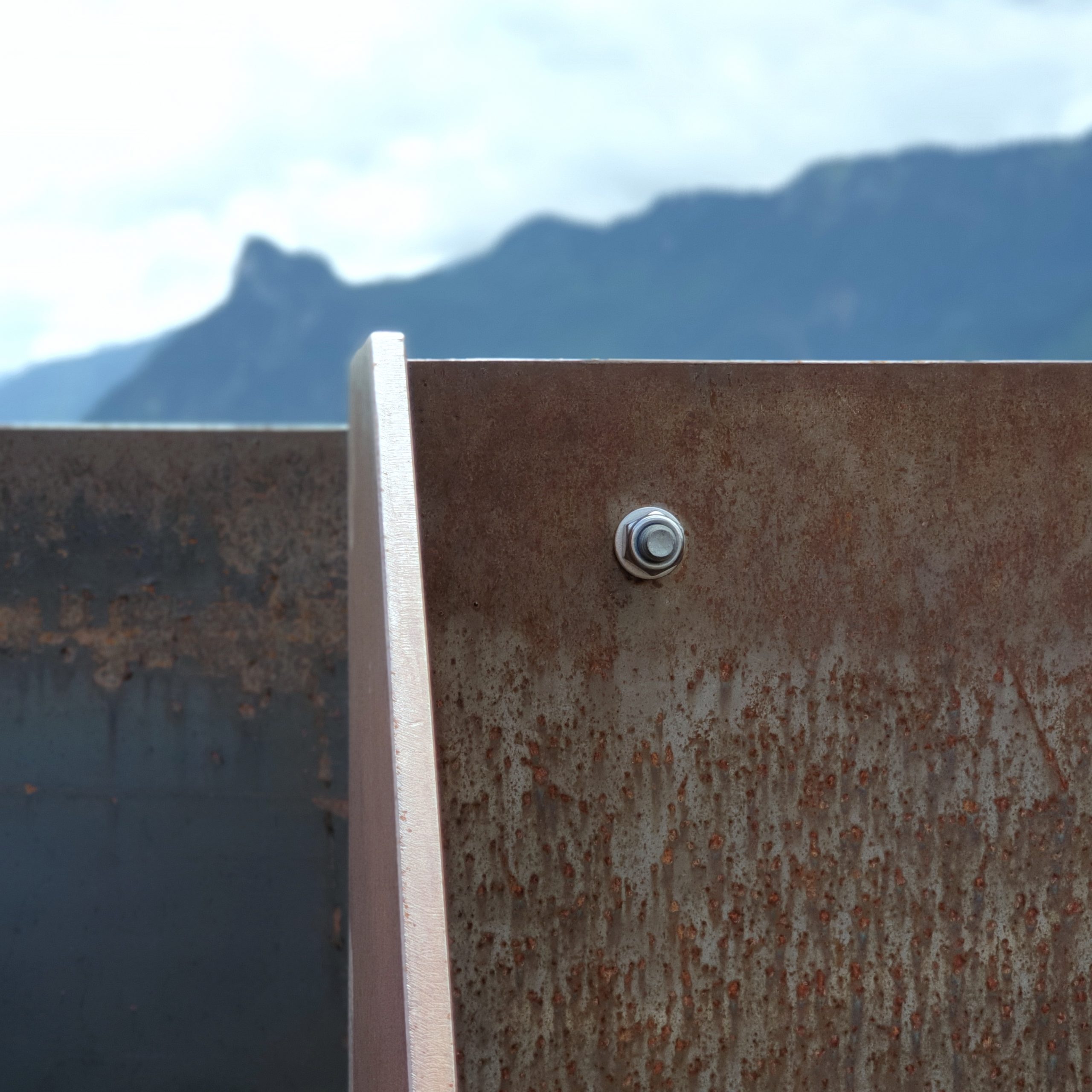
Land art
On its different locations, the sculpture enters into a dialogue with the surrounding landscape. The deep windows and the sculptures top allow for fresh frames and points of view. In turn, seen from below, the sculpture may appear as a mark in the landscape. Therefore, it has an index. In Unterammergau, on its third location, it has the index III.
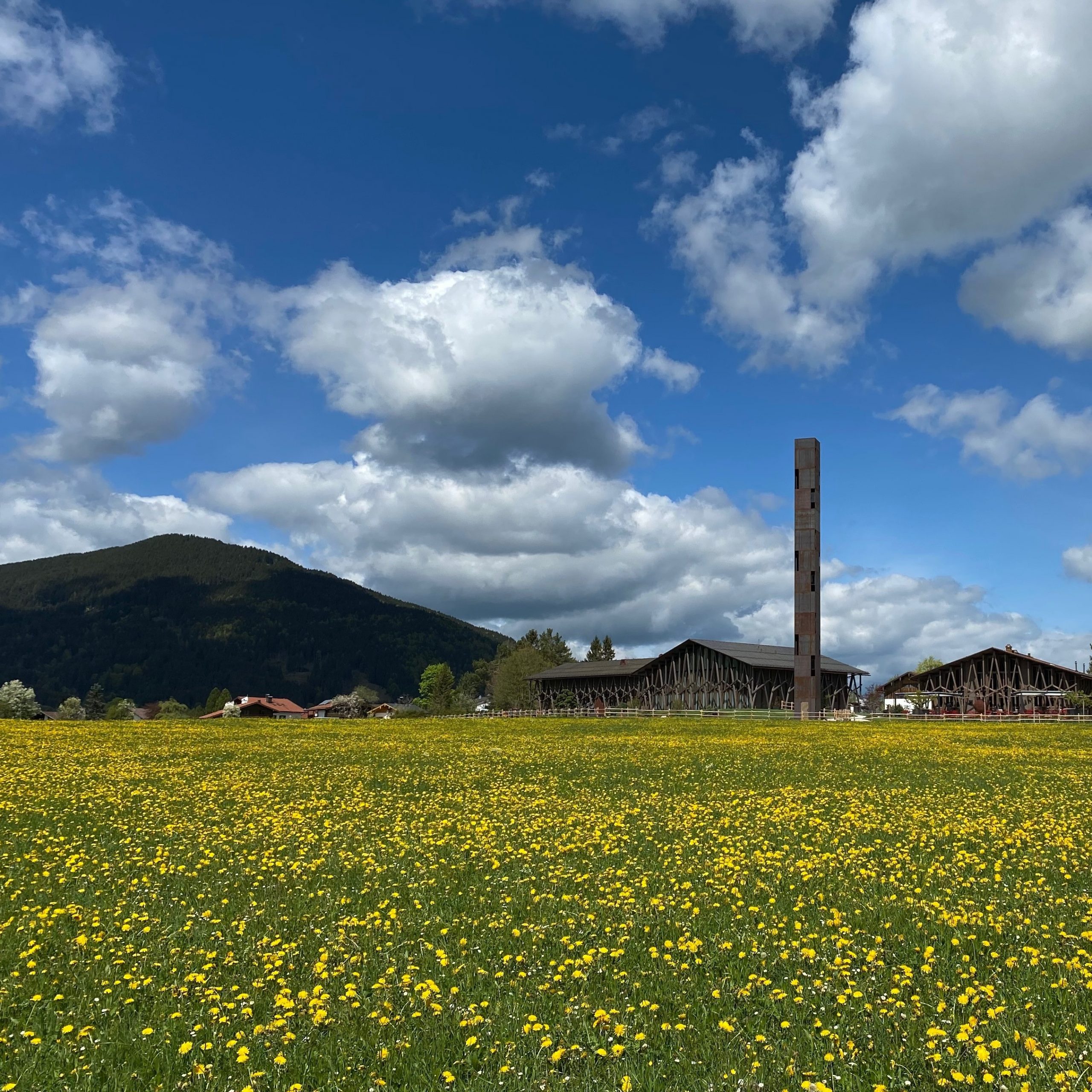
Mark
On its first location, in Reithofen, the sculpture hat marked the contrast of horizontal and vertical lines in the gravel planes north of Munich. On its second location, in Munich's Kreativquartier, it became a mark of urban development. In the sculpture garden of the mSE Kunsthalle, SIGHTING was standing above the Pulvermoos, a moor between Obeammergau and Unterammergau. The slopes of the surrounding mountains towered over the slender cuboid, which highlighted the width and curves of the valley. Seen from the mountaintops,SIGHTING disappeared in the deapths of the valley; seen from Oberammergau, it was a dash in the setting twilight.
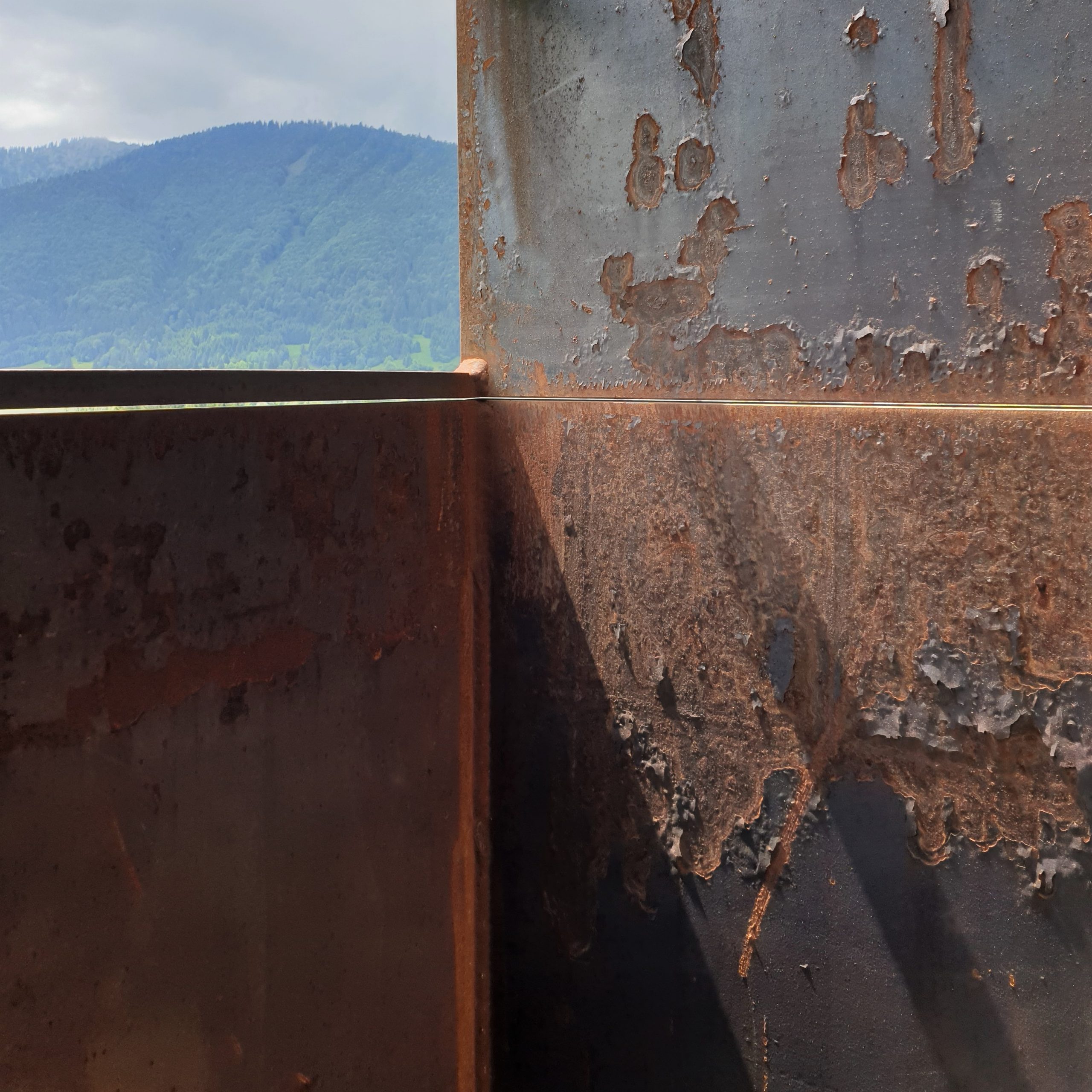
Perspectives
In ever new frames, the sculptures grants a view of the mSE Kunsthalle, of Unterammergau, the beginning of the trail Altherrenweg, the mountains Laber, Kofel, and Hörnle, Oberammergau: villages, forests, meadows and marchland. The soft sway of resounding steps and the heat of the metal in the sun (even on winterdays) are part of the view of the valley who's changing expressions throughout the day and throughout the year are beautifully unlocked by the artwork.
Voices and Impressions (German language)
Ich denke, »Sichtung« ist, seinem Titel gemäß, ein wunderbarer Point de Vue. Und das in reziprokem Sinn: es ist ein Objekt zum Sehen und zum gesehen Werden. Es bereichert in doppeltem Sinn die Landschaft.
(Prof. Dr. Rainer Metzger, Akademie der Bildenden Künste, Karlsruhe)
Bildwerke in die Landschaft zu stellen, sie in der Natur wirken zu lassen, ist seit der Antike eine große Aufgabe der Kunst. Die umgebende Natur kann das Bildwerk in seiner Wirkung steigern, andererseits verweist das in der Landschaft aufgestellte menschliche Werk, von wem es auch gemacht sein mag, immer auf die Einzigartigkeit und Größe der Natur. In den Landschaftsgärten der Barockzeit, wie z. B. der Garten der Villa d´Este in Tivoli, wurde dieses Thema zur hohen Perfektion gebracht: Häufiger Wechsel von Licht und Schatten, überraschende Ausblicke in die Ferne und oft der Klang von plätscherndem Wasser sollen die Sinne des Gartenbesuchers reizen.
Die Raum- und Klangskulptur SICHTUNG intendiert Ähnliches und erreicht es mit heutigen, unserer Zeit gemäßen Mitteln. Der elegant proportionierte (Grundriss 2,4 x 2,4m), über 32 Meter hohe und aus 13 übereinander positionierten Kuben bestehende Stahlturm führt den Blick des von außen Betrachtenden automatisch nach oben. Im Turm führt eine enge Wendeltreppe zu dem bekrönenden Aussichtspodest.
Naturgemäß blickt man nach unten, konzentriert sich auf die Stufen, wenn man eine Wendeltreppe hinaufschreitet. Doch in diesem Turm ist es anders: Nach wenigen Schritten öffnet sich ein 48 cm breiter – entsprechend dem Treppenverlauf – von Decke bis zum Boden reichender Einschnitt: Er lässt Licht einfallen und lenkt vor allem den Blick nach außen. Da in jedem Kubus zwei diagonal sich gegenüberliegende Einschnitte sind, blickt man beim Hinaufschreiten wie auch beim Heruntergehen der über 150 Treppen 26 mal in eine andere Richtung der Landschaft, bzw. aus anderer Höhe in die Landschaft. Der ständige Wechsel des Blickwinkels auf eine jeweils nur ausschnitthaft zu sehende Umgebung steigert die Intensität der Wahrnehmung. Da die Metallstufen unter dem Schritt des Einzelnen leicht schwingen und vor allem klingen wird der Turm zum Resonanzkörper der eigenen Bewegungen bzw. all derer, die sich in ihm bewegen.
Ein Bildwerk in der Landschaft, das die menschlichen Sinne stimuliert.
(Prof. Dr. Raimund Wünsche, Ehem. Direktor der Glyptothek und der Staatlichen Antikensammlungen in München)
Es ist, als ob man auf einer Landkarte dezent einen Ort festhalten wollte. Aus der Ferne ist SICHTUNG III weniger Signatur als Markierung, ein Strich in der Landschaft nachgerade. Vor Ort wird SICHTUNG III zu einer körperlichen Erfahrung. Der Blick gleitet an den Außenwänden direkt gegen den Himmel, hat man sich die Skulptur schließlich körperlich erarbeitet und ist durch das Innere erst nach oben gelangt, darf man sich mitten drin und obenauf fühlen, welch Überblick auf das Terrain, welch Aussicht auf die Landschaft!…
(Daniela Gregori, Kunsthistorikerin, Kuratorin)
